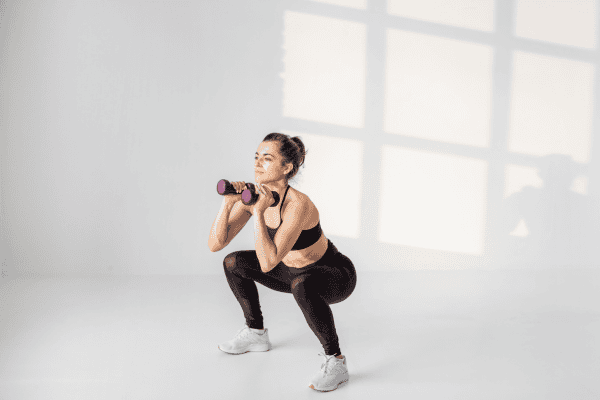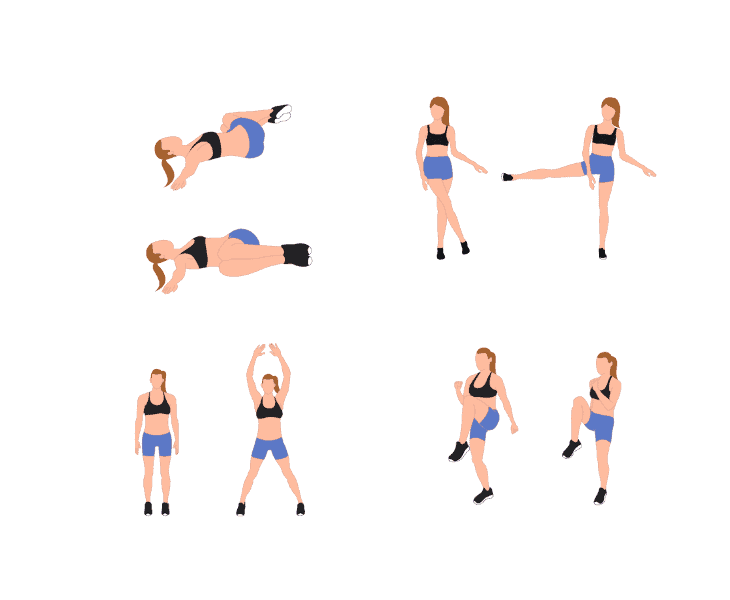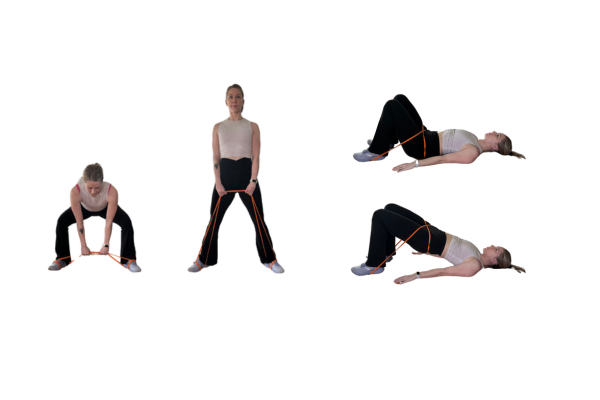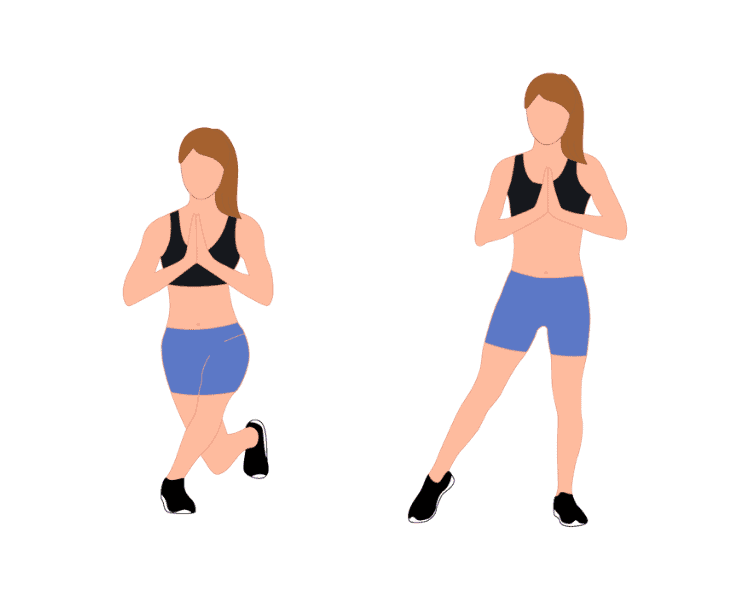Stretching Routine for Beginners (10 Minutes)
The 10 minute stretching routine for beginners can be done after a workout, before bed, or in the morning.
It can be a great morning beginner stretching routine to get all the kinks out of your body after sleeping. It can also help you wake up in the morning and start the day refreshed.
This stretching routine can help you get more flexible but it will also strengthen your muscles and improve your balance.
If you suffer from back pain or neck pain, the stretching routine for beginners can be a great relief and you can do these daily at home.
How often should a beginner stretch?
How many times a week a beginner should stretch depends on your overall goals. To begin, it’s recommended to stretch at least 3-4 times per week if your primary goal is to enhance flexibility.
However, if your aim is to relieve stress and tension, consider incorporating a daily stretching routine into your life.
Harvard Health suggests that healthy adults should target all major muscle groups at least twice a week for improved flexibility.
Spend a total of 60 seconds on each stretching exercise. You can achieve this by holding each stretch for 20 seconds and repeating it three times.
I recommend holding a stretch at least 30 seconds to bring your muscle back to normal length.
The amount of time you can dedicate to stretching will determine the number of stretches you do and how long you hold each stretch.
If you can spare 10-15 minutes, you can complete a routine of 10 stretches by holding each one for 30 seconds.
However, if you have limited time, you can prioritize 3-5 stretches that target key areas prone to tension due to extended sitting.
Focus on stretches for the calves, inner thighs, hip flexors, pecs, and levator scapulae.
How do I start a stretching routine for beginners?
Once you’ve established when and where you’d like to stretch and how much time you can allocate, it’s time to implement stretching into your daily life. There are two approaches you can consider:
Option 1: Begin by choosing one stretch to perform each day. Consistency is key. As you become more comfortable and consistent with this routine, gradually add another stretch or two to your daily regimen. Keep building until you’re performing all the stretches you desire.
Option 2: Schedule a specific day or two each week to complete your full stretching routine. Mark it on your calendar and commit to this schedule. After 2-4 weeks of regular practice, start adding more stretching days to your schedule as you see fit.
Is it better to stretch in the morning or night?
Stretching after waking up can relieve any discomfort or tension from your sleep. It can help you wake up and start the day with a boost of energy.
Stretching can increase the blood flow in your body and gently wake up all the muscles.
At night, stretching can help you to calm down and release the stress from the day especially if you combine stretching with breathing exercise.
You can also relieve some of the muscle strain from sitting all day or doing repetitive work.
There is no perfect time for stretching. It depends on your preference and you can also do it morning and night, or during your lunch break.
Is 20 minutes of stretching a day enough?
20 minutes of stretching a day is enough. 10 Minutes are actually all it takes to target stiff or overactive muscles.
You can choose between a daily 10-minute beginner stretching routine, or take 2-3 days out of your week and do a 20-30 minutes full body stretching routine.
However if stretching is a part of your well-being routine, go ahead and stretch 20-30 minutes per day. If you are short on time the after workout stretch is enough to bring your muscles back to normal length.
What are the different types of stretches?
Below is a table of the different types of stretching by the National Academy of Sports Medicine:

Which type of stretch is the right one for me?
If you are a stretching beginner, I suggest focusing on active and static stretching in your basic stretching routine.
Use active stretching as part of your warm-up before a full body workout, and static stretching as part of your cool down routine.
If you do a stretching routine only without any other exercises, then use the static stretching. You can also add SMR to this.
10 Minute Stretching Routine For Beginners
It is best to hold each stretch around 20-30 seconds. If you feel discomfort, you can start by holding the stretch only 5 to 10 seconds.
Below are 10 easy beginner stretches. If you do each stretch 3×20 seconds you get a 10 minute stretching routine.
Keep in mind that some stretches have to be done on each side, so you can stretch each side for 30 seconds once.
You can also hold your stretch longer and take a few seconds break. You can vary the exercises and length depending on your needs. Here are the best stretches for beginners:
#1 Seated shoulder squeeze
The seated shoulder squeeze is an easy stretch to improve posture and strengthen your upper back.
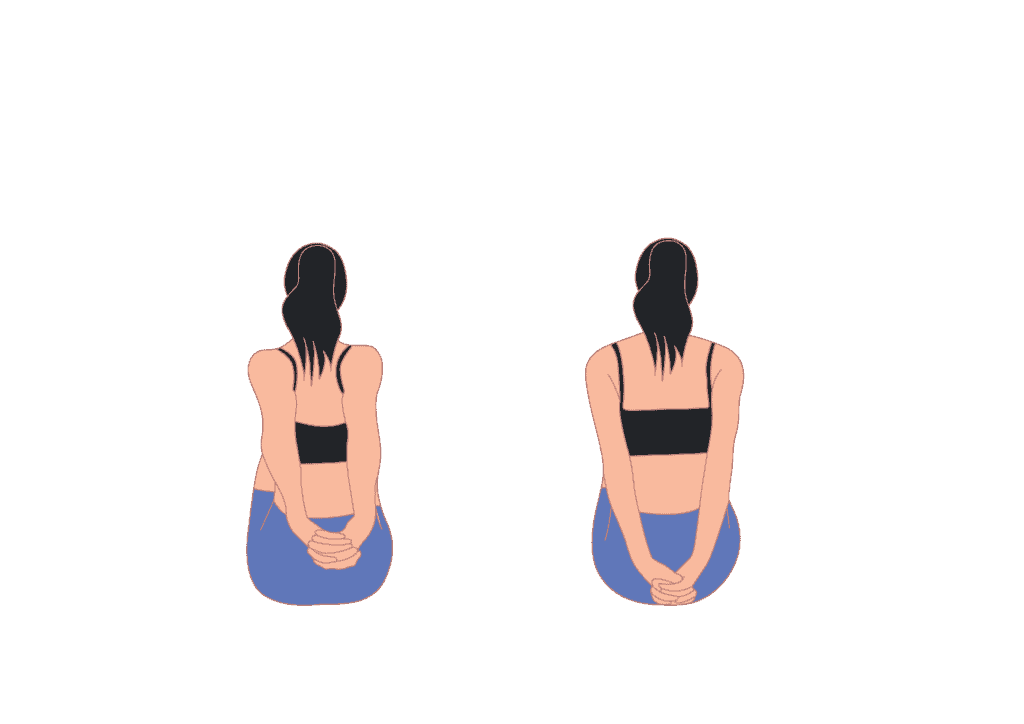
To start, sit on the floor or a chair. Clasp your hand together behind your lower back and make sure to straighten your arms and back.
Hold for 5 seconds and release. While you hold, press your shoulder plates together.
#2 Seated neck release
The seated neck release exercise will gently stretch and relax the sides of your neck.
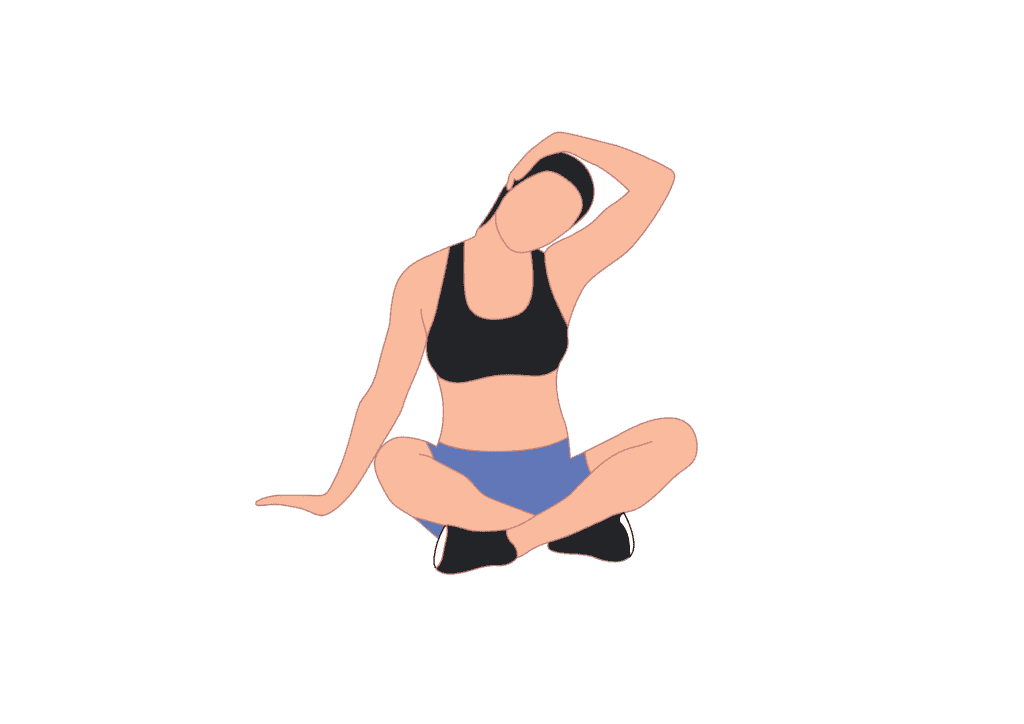
Sit on the floor or chair, move your right hand over your head and place it on your left ear. Gently pull your head to the right.
Push your left shoulder away from your left ear towards the ground. Hold this gentle stretch anywhere from 5 to 30 seconds, then release and switch sides.
#3 Neck stretch
The neck stretch can relief tension in your neck and upper back. You can do this standing or sitting.
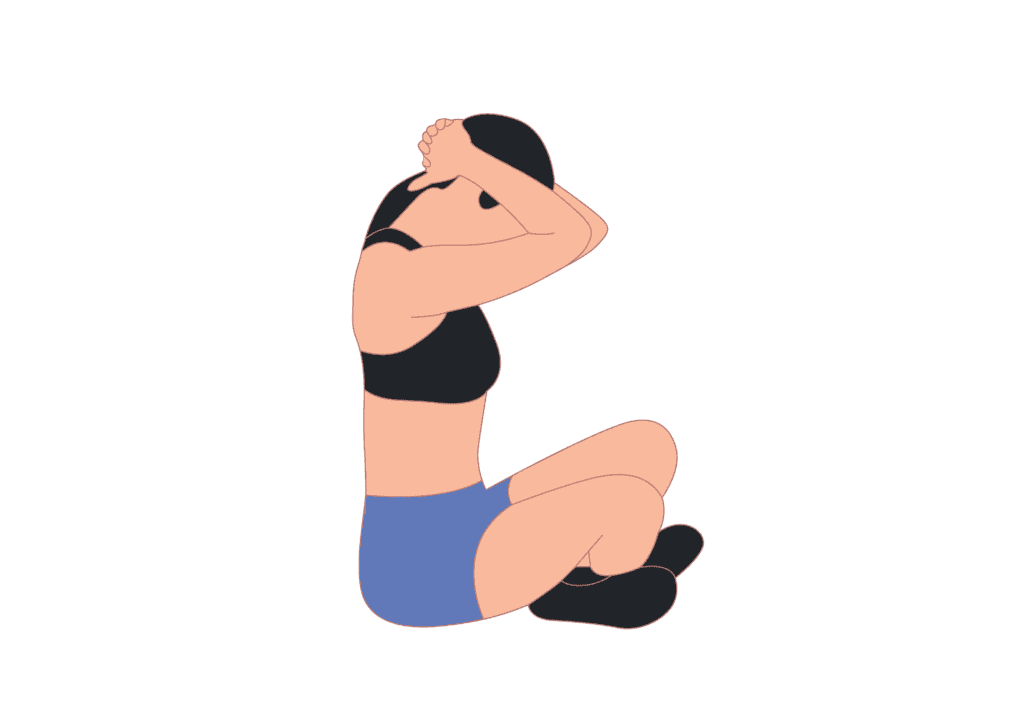
Clasp your hands together on the back of your head. Keep your spine straight and gently lower your chin towards your chest.
Don’t pull your head down rather let the weight of your hands gently way down your head.
Stretch for 5 to 30 seconds, then release. Lift your head slowly.
#4 Cat-Cow
The cat-cow exercise will stretch your neck, back, and abs. It promotes spine flexibility and strengthens your abdominals.
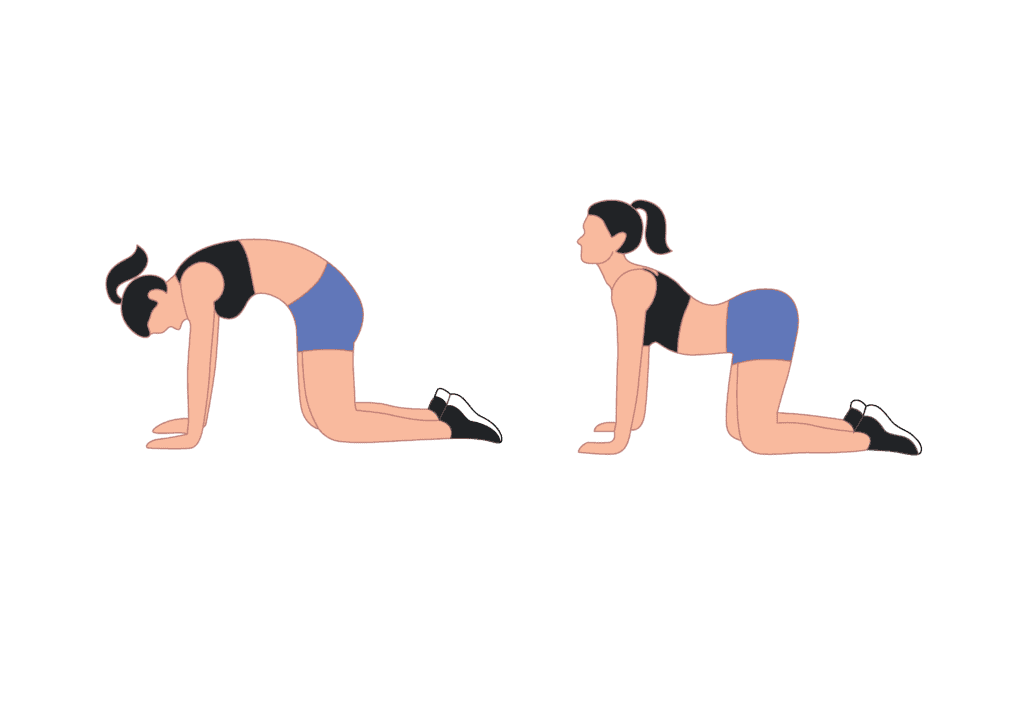
Go on all fours on a yoga mat. Place hands below your shoulders and knees below your hips. Breathe in and drop your belly as you lift your gaze up.
Then breathe out and round your spine while the head moves down towards the chest. Feel the stretch in your spine and upper back.
#5 Side bends
Side bends increase the flexibility in your abs and back and improve posture.
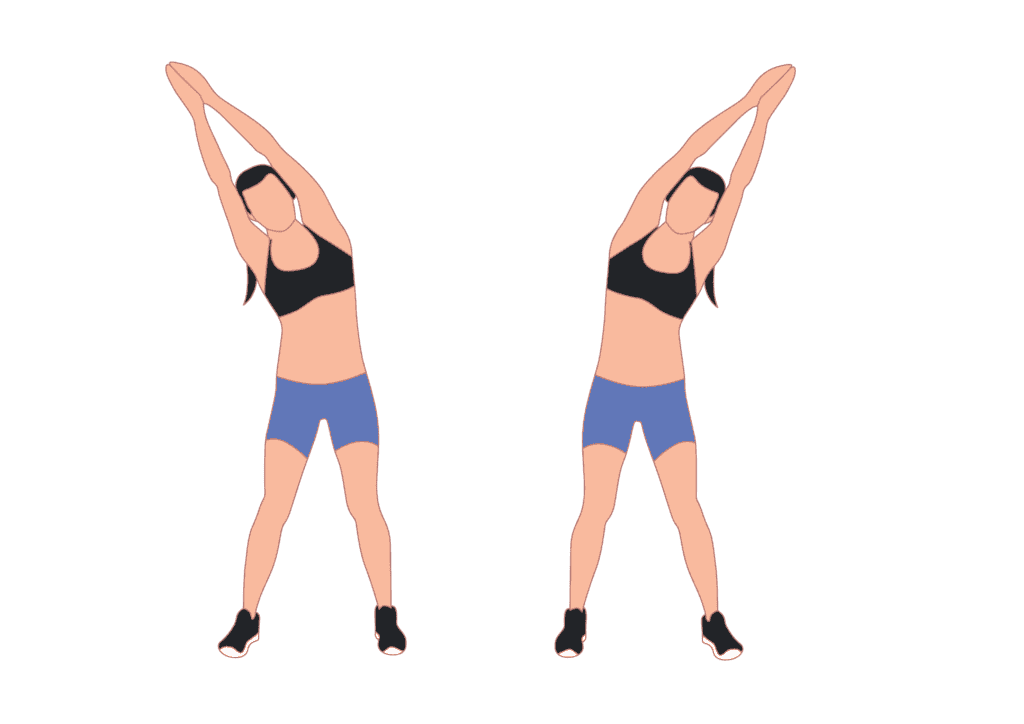
Stand with your feet hip width apart, or a little wider. Clap your hands together above your head with straight arms. Move your hands to the left side and bend your upper body.
Make sure to keep your hips straight. Stretch as far to the side as you can. Then come back to center and stretch to the other side. Hold each stretch 5 to 30 seconds.
#6 Shoulder rolls
Shoulder rolls are a great exercise to relieve stress around the neck and shoulder area. You can do this standing up or sitting.
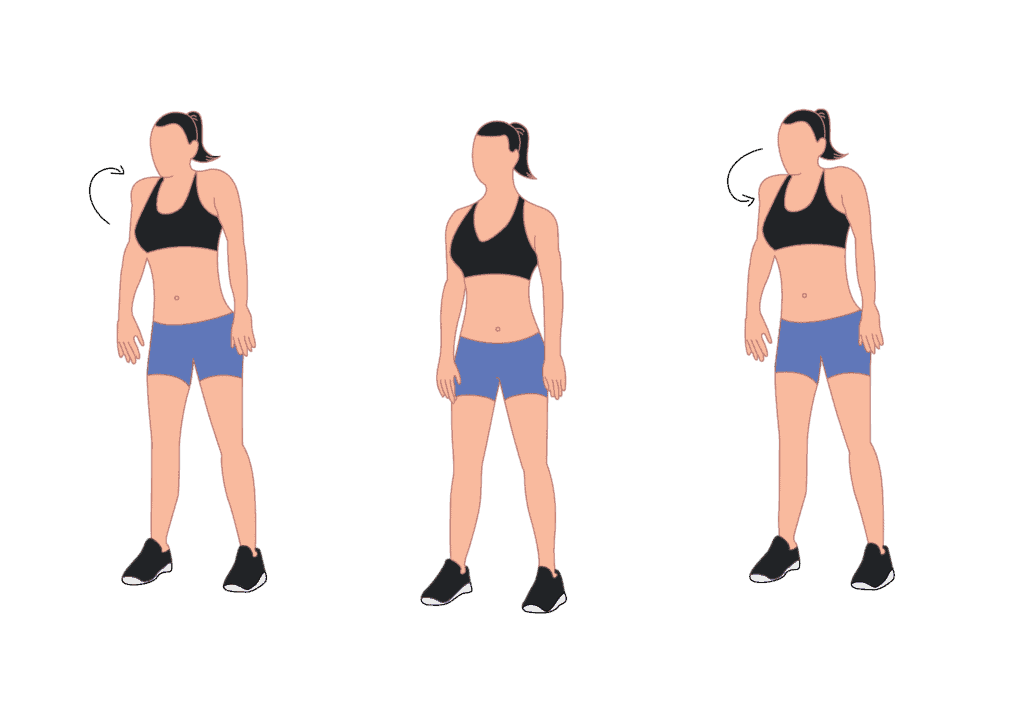
Stand with feet hip width apart or sit on a chair and keep your spine straight. Let your arms hang to the sides next to your hips.
Pull your shoulders up towards your ears, then roll them back and squeeze your shoulder blades. Keep rolling them down, forward, and back up. Do ten rolls in each direction.
#7 Forearm stretches
Forearm stretches are an easy exercise to improve strength and flexibility in your wrist and forearm. This area of the body is often overlooked, but very important to pay attention to.
Flexible and strong forearms and wrists can help with exercise balance and control. It can also relief tension from simple tasks like computer work, cleaning, chopping food, etc.
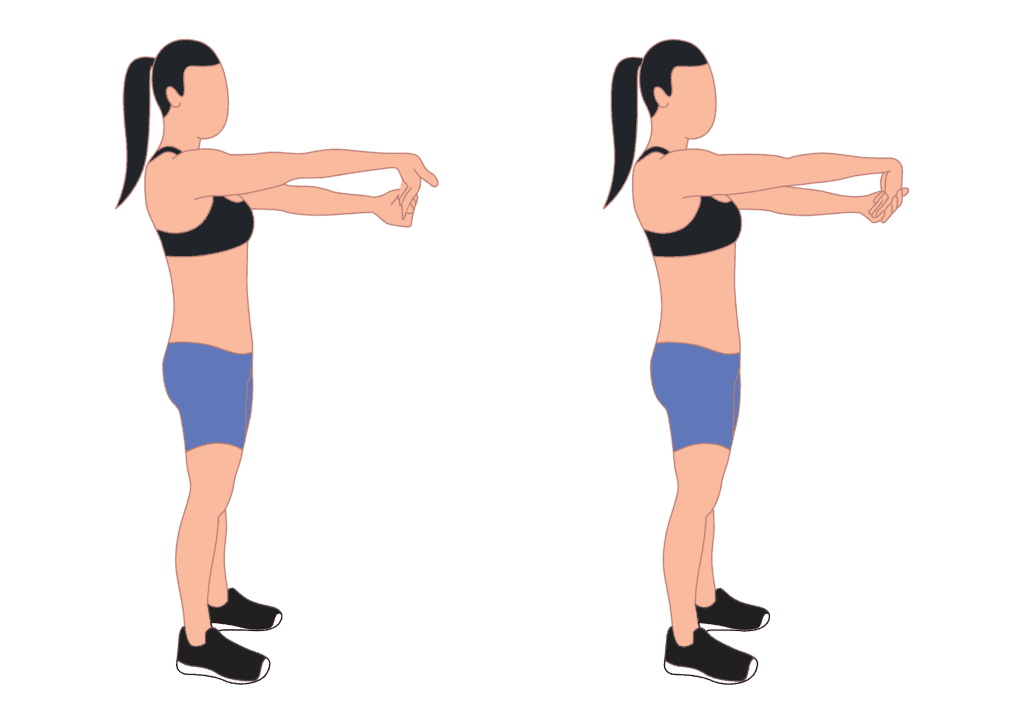
You can do this exercise standing up or sitting.
Stretch the right arm out and use your left hand to pull your right hand down and towards your body. Flip your right arm around to stretch the other side.
Then switch arms. Hold each stretch for 5 seconds. Repeat as necessary.
#8 Knee to chest stretch
The knee to chest stretch will relax your hips as well as your lower spine, relieving some pressure on the spinal nerves.
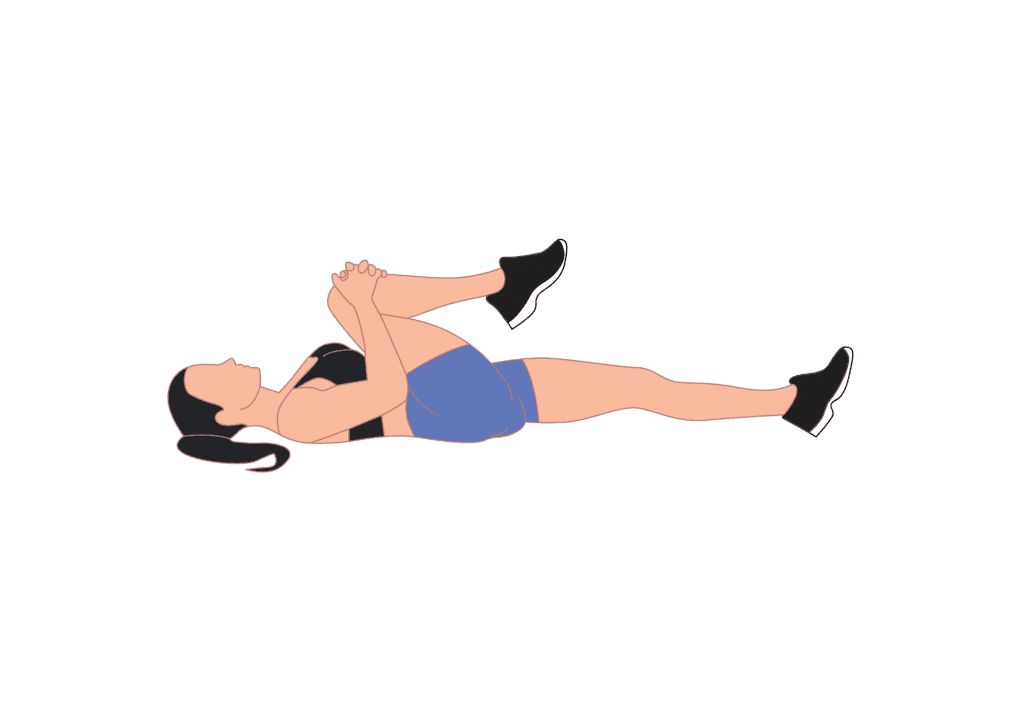
Lay on your back and straighten your legs out. Pull in the right knee and wrap your hands around it.
Push the knee towards your chest to get a good stretch. Make sure the left leg stays straight. Then switch sides. Hold the stretch for 5 to 30 seconds.
#9 Seated forward fold (wide legged)
The wide legged seated forward fold will stretch your inner thighs, hamstrings, and spine.
This exercise is easily adjusted to your flexibility level. Simple bend forward as far as you can.
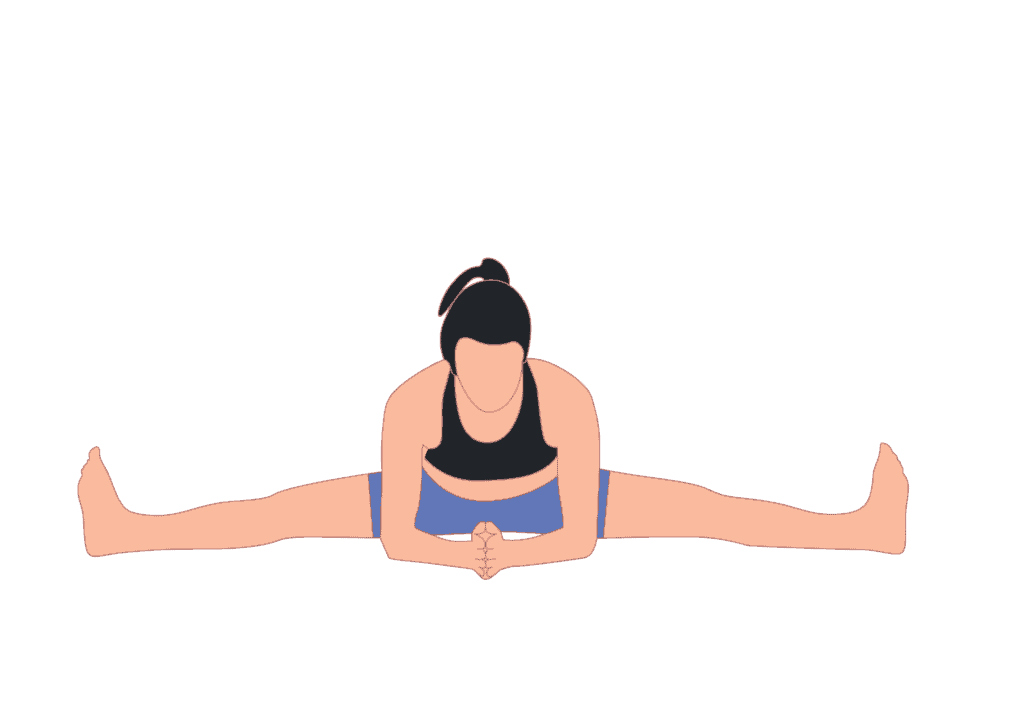
Sit on the floor and place your feet as wide as comfortable. Straighten your spine and place your hands in front of your hips.
Now walk you hands forward as far as you can. Make sure you get a stretch but do not compromise form or hurt yourself. Your spine should stay straight.
Stay in the stretch for 5 to 30 seconds. If this is too easy, you can also lower on your elbows.
#10 Uttanasana (Standing forward fold)
Uttanasana relives tension from the spine and upper back as well as the neck. It improves posture and hip flexibility.
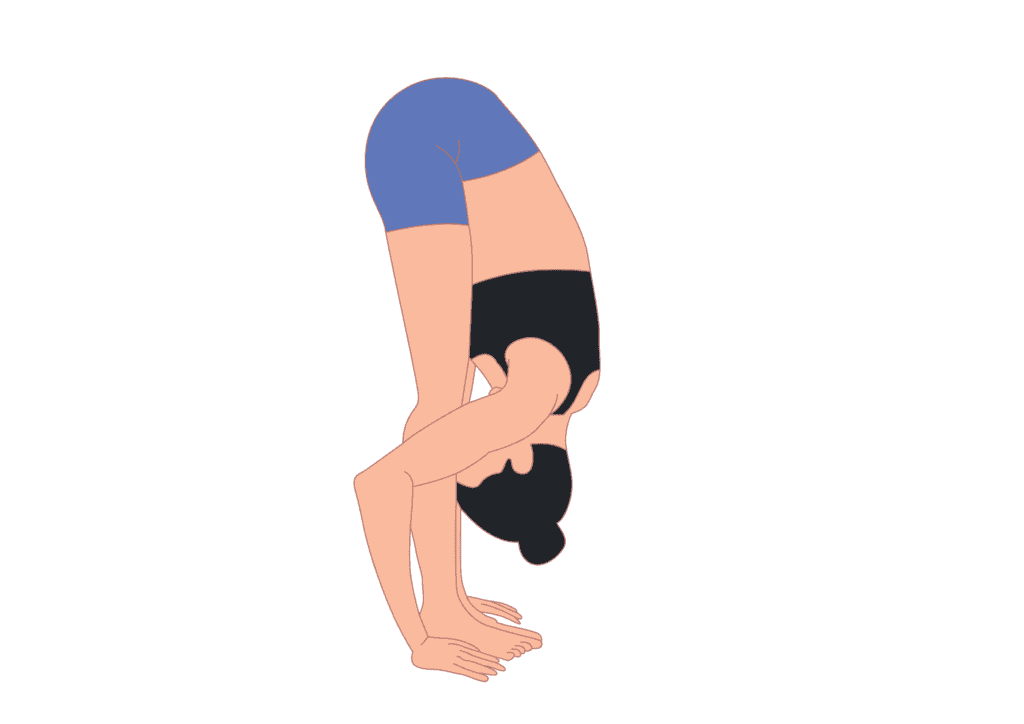
Place your feet hip width apart. Fold forward and keep your knees slightly bend. You are supposed to stretch the back and neck, so if you feel pain in your legs, bend the knees more or spread your feet wider.
You can wrap your hands around the opposite elbow, place your hands next to your feet or in front of your feet.
Make sure to release all the tension in your neck and upper back and let your upper body dangle. You can swing gently side to side or rock your head front to back.

